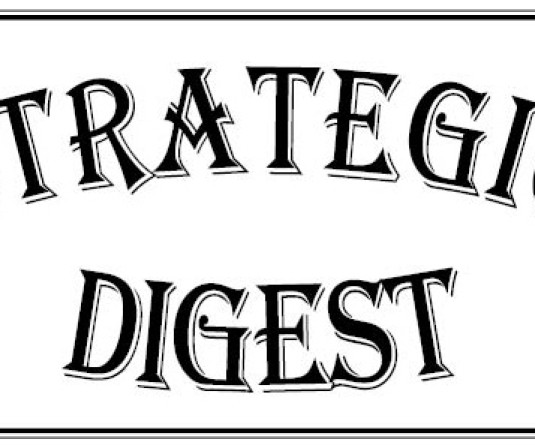Rokotsino Meyase.
Head of Outreach Services, CIHSR
Chronic diseases affect health and are long-lastinghealth condition that affects the quality of life. Itlimits the activity of daily living for the affected person as well as the well-being of the family members as they are involved in the care of the affected person.The burden is growing - the number of people, families, and communities afflicted is increasing. According to the Centers for Disease Control, chronic disease is the leading cause of death and disability in the United States, accounting for 70% of all deaths. Moreover, chronic conditions such as back pain and depression are often the main drivers of decreased productivity and increased healthcare costs. Data from the World Health Organizationshow that chronic disease is the major cause of premature death around the world.Chronic diseases are everyone’s responsibility as it places a big burden on our society and mental health has been identified as a serious public health concern. According to WHO, 1 in every 8 people, or 970 million people around the world are living with a mental health disorder, such as anxiety and depression. In 2020, the number of people living with anxiety and depressive disorders rose significantly because of the COVID-19 pandemic. Chronic illnesses have increased and these illnesses are expensive to care for and need to be taken care of for the long term.Therefore, chronic health issues carry the potential to impact the life of the sick person as well as the family members who are responsible for giving care.
The most common chronic health problemswith which people living within our land, as based on our experience at present, are:
• People living with HIV, Heart disease, Diabetes, High Blood Pressure, etc
• People living with special needs/differently able
• People living with kidney failure on dialysis
• Stroke
• Mental illness.
• Cancer
• Disability due to various reasons
• Substance Abuse
Some of the impacts we can see in and around us because of the above conditions are:
1. The impact on psychology and emotions:
The affected person and family members perceived psychological stress and anxiety. Each emotion affects family members in different ways and to different extents based on the severity and duration of the sickness.
2. The impact on the financial burden onthe family:
One of the greatest burdens on family members of Chronic ill-health patients is the financial cost to the family. This can include treatment costs, transport to appointments, the cost of hiring a caregiver, and adapting their home environment around the affected person. The financial strains felt by family members of Chronic ill-health patients often lead to stress and worry.
3. Impact on familymembers' education and services:
Living with, or caring for, a relative with a chronic disease can have a large impact on the education and careers of family members. This could include disruption of school work in siblings or children of the patients, or the employment of adults being affected and the burden of care placed upon them.
4. Impact on Family relationships:
There are chances of having challenges for the family members of patients who experience a negative effect on their family relationships which adds more burden to the caregivers among family members.
5.Impact on social life:
The burden on family members caring for a person with a disease has a drastic effect on their social lives as they become fully engaged with the caregiving roles and miss out on their social engagements.
6. Impact on the Quality of Life(QoL) of the patients and families:
Overall, having a chronic disease patient in the family becomes the barriers that prevent families from taking advantage of leisure opportunities thereby affecting the quality of life for the whole family.
The impact of disease on families of patients is often unrecognized and underestimated.
We can all agree that providing medications alone is no longer enough. People are looking for more, and so value addition in healthcare services is becoming an ever more important aspect of healthcare in people living with Chronic illness including family members.
Therefore, it is necessary to provide value-added services to our clients beyond the pill. We can extend our engagement with the people living with chronic health issues and the immediate family caregivers with innovative ideas and creative opportunities.
The power of Arts and Crafts:
The benefits of arts and crafts are wide and numerous.Handmade crafts have been gaining in popularity over the last few years, offering therapeutic benefits that can be both calming and energizing. It allows for exploringcreativity, expressing emotions, acquiring new skills, and connecting with others. We can try various projects from where we are with very few basic supplies, or join workshops to enhance the benefits of such skills/engagements. The best thing about arts and crafts is that we don’t need any special skills to start. Handmade crafts offer a powerful tool for mental health and well-being. Crafting can be used as a form of self-care or even therapy.
The power of handmade crafts for mental health is undeniable and we need to take full advantage of its therapeutic benefits1.
Crafting can be beneficial in many ways; it offers an enjoyable way to socialize. Studies have shown that it reduces stress and anxiety, increases positive emotions, and gives us a sense of accomplishment - all things that are key to maintaining strong mental health. Crafting also requires focus and concentration which helps to distract from negative thoughts or worries. It’s even been found to increase self-esteem by allowing people to express their creativity in tangible form2.
Additional Value Based participatory program on crafts in CIHSR:
CIHSR Outreach Service Department organizes participatory programs for people living with Chronic health issues includingtheir caregivers to improve the quality of life in the hospital as well as in the community. We work with people of all age ranges and run participatory programs with various skills like Chinese painting, Paper pens, oldcalendars, Newspaper crafts, etc. As we continue the program, we have learned that we need to work differently for each individual and every individual is unique.Managing a chronic health issue is not simple, but our main desireis to create a project that would allow room for each client to explore their level of capacity and gift to reach God’s given potential.
Our objective:
• To provide additional benefits to our clients and family members in addition to clinical benefits in hospital and community-based healthcare.
• Therapeutic and rehabilitation for clients and family.
• Empowering and transforming less privileged people in hospitals and the community.
Impact of participatory program in craft in CIHSR:
1. Every individual clientexperiences satisfaction and joy.
2. Most of the clients develop connectedness with others as well as family members.
3. Clients can develop new skills, grow in their unique creativity, and generate emotional responses to their handiwork.
4. We takethe opportunity to engage clients and family members with handmade crafts withina specific timeand help themdevelop the pattern of engaging with handmade crafts at home with more time. It becamea therapeutic program for them.We learned from our clients that allowing themsome creative time and engagement with crafts can help improve overall well-being.
5. Handmade crafts participatory program could become an income generation for some ofthem.
We look forward to supporting and shaping a brighter future for those we empower.
“Little things we do, God blessed and multiply it.”
References:
1. Ji, L., & Liu, Z. (2022). Analysis of the Effects of Arts and Crafts in Public Mental Health Education Based on Artificial Intelligence Technology. Journal of Environmental and Public Health, 2022. https://doi.org/10.1155/2022/9201892
2. Wang, S., Mak, H.W. & Fancourt, D. Arts, mental distress, mental health functioning & life satisfaction: fixed-effects analyses of a nationally-representative panel study. BMC Public Health 20, 208 (2020). https://doi.org/10.1186/s12889-019-8109-y






